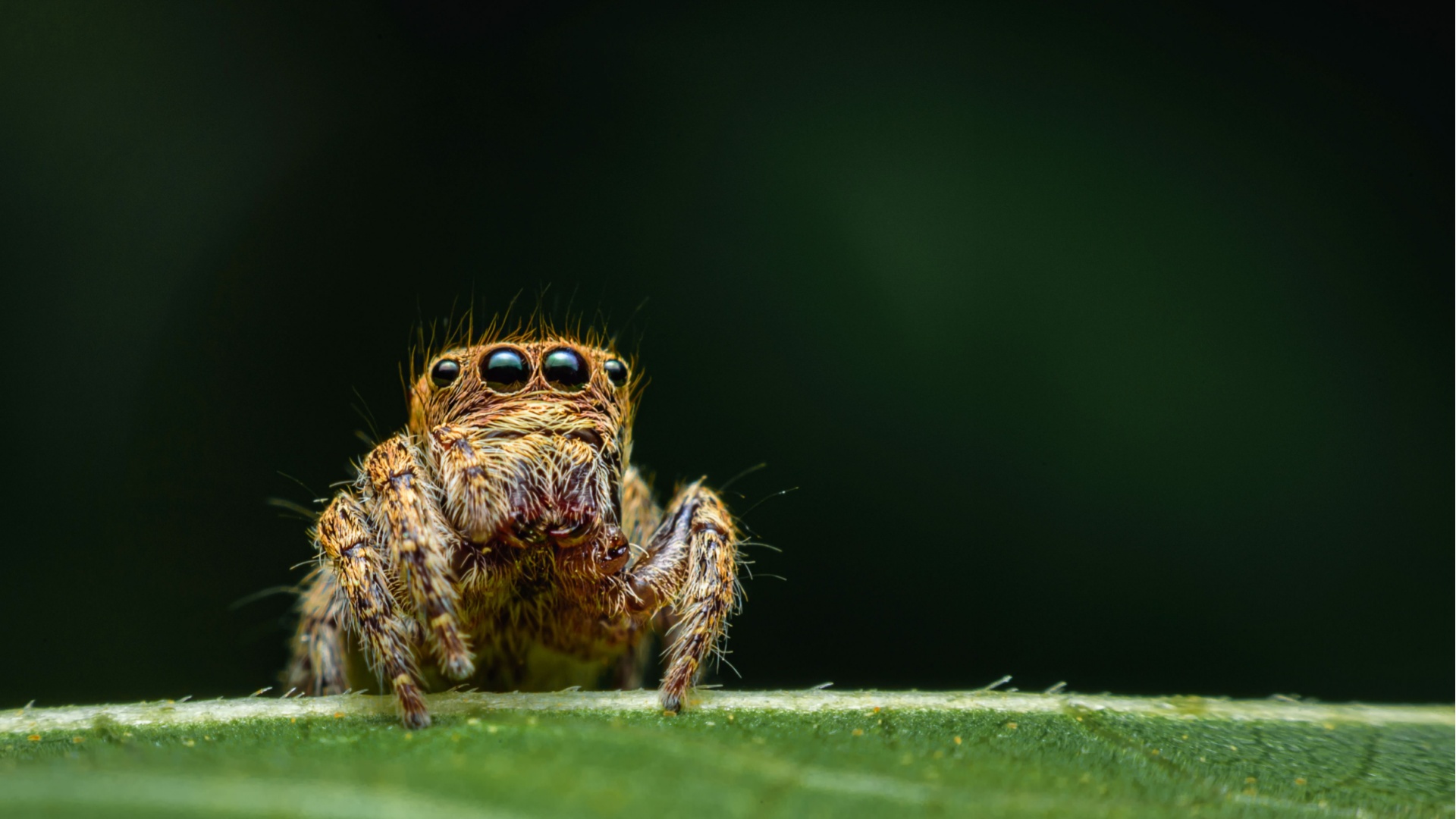The animal kingdom is full of surprises, and some of the coolest creatures out there have more than two eyes! From spiders with eight piercing peepers to dragonflies with five eyes designed for incredible vision, these animals have evolved their extra sets to suit their unique lifestyles.
Whether it’s for hunting, navigating, or keeping an eye out for predators, their many eyes give them an edge.
Let’s take a closer look at these multi-eyed marvels and the fascinating ways they use their extra vision!
1. Spiders
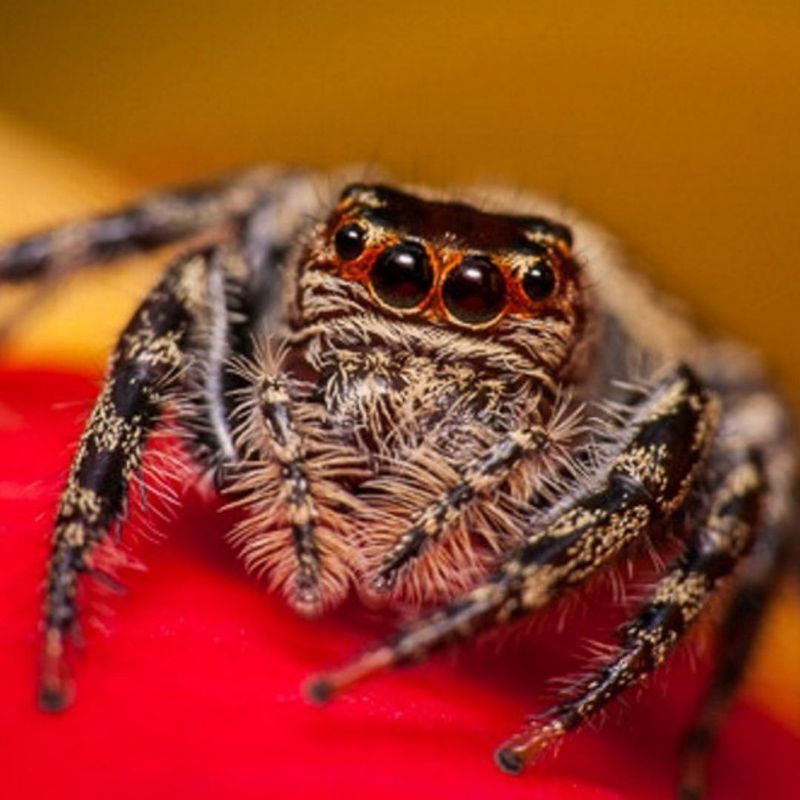
Spiders are fascinating creatures with an iconic multiple-eye setup. Most species possess eight eyes, though the arrangement and number can vary. This unique feature offers them a broad field of vision, crucial for spotting prey and predators. Some spiders have excellent vision, like the jumping spider, which can see in high resolution.
Despite having many eyes, not all spiders rely heavily on visual cues. Some, like the web-weaving species, depend more on vibrations and other senses. This adaptability highlights the diverse survival strategies within the arachnid world.
Their eyes are instrumental in their nocturnal hunting habits, allowing them to thrive in low-light conditions. This attribute makes spiders formidable hunters, able to detect the slightest movement around them.
2. Horseshoe Crabs
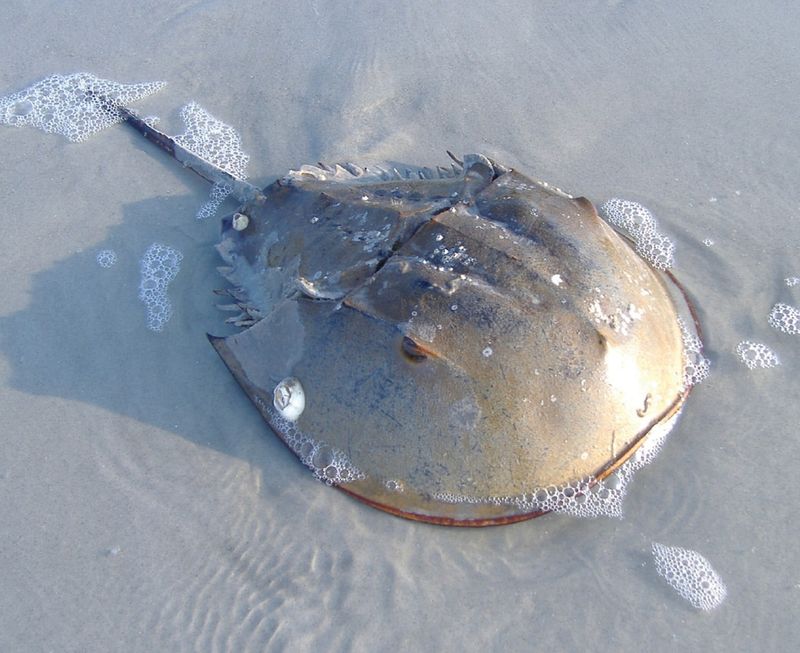
Residing along coastlines, horseshoe crabs are ancient creatures boasting ten eyes. These eyes serve various functions, from detecting light and movement to navigating the ocean floor. Their compound lateral eyes are particularly remarkable, resembling those of insects.
Additionally, their two median eyes on the top of the shell help them in detecting shadows from overhead threats. This multi-eyed arrangement is vital for their survival in the dynamic littoral zones they inhabit. Their ability to sense ultraviolet light is particularly useful during their spawning season.
Despite their intimidating appearance, horseshoe crabs are harmless and play a crucial role in their ecosystem. Thanks in part to their versatile vision, they have survived for over 450 million years, making them among the oldest animals still thriving today.
3. Box Jellyfish
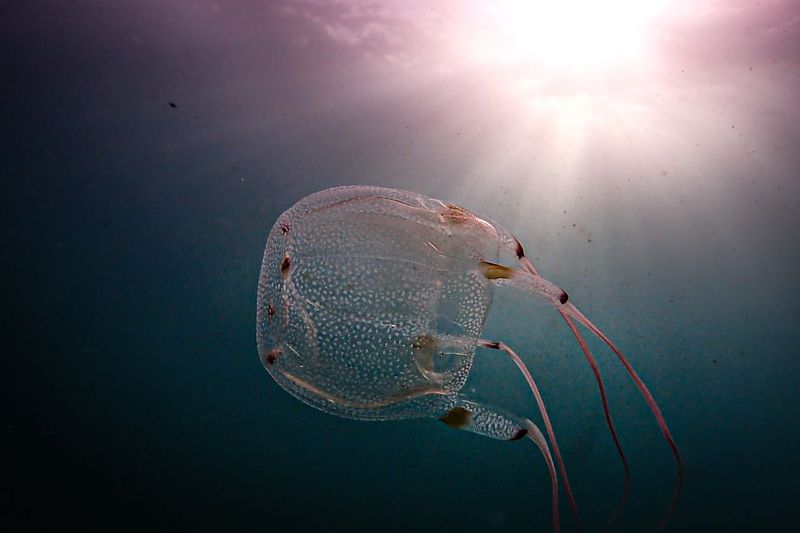
Box jellyfish are known for their venomous sting and complex eye system. Unlike typical jellyfish, they possess twenty-four eyes organized into four distinct clusters. This arrangement provides them with a 360-degree view of their surroundings.
These eyes are divided into two types: simple ocelli and more complex lensed eyes. The latter allows them to process visual information in a way that’s surprisingly sophisticated for such a primitive organism.
Box jellyfish use their acute vision to hunt and avoid obstacles, despite lacking a centralized brain. This capability showcases the intricate adaptations that nature can achieve.
4. Starfish
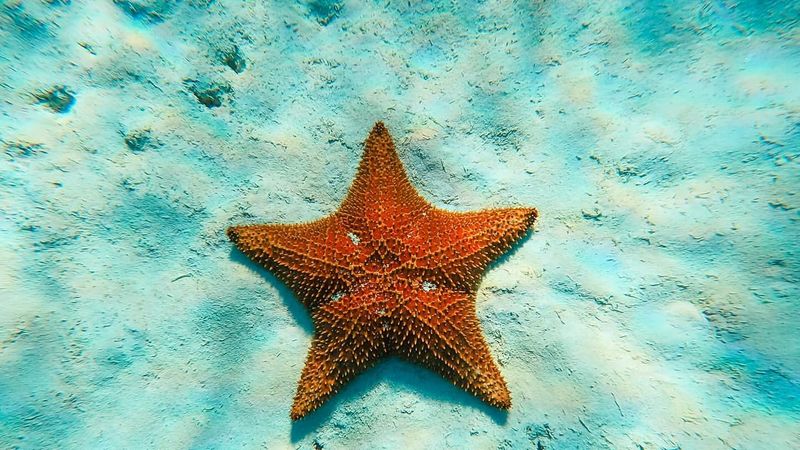
These creatures possess a unique eye setup, with each arm tip housing a small eye. These simple eyes, known as eye spots, are capable of detecting light and dark, aiding in navigation across the ocean floor.
While their vision is not detailed, it is sufficient for avoiding predators and locating habitats rich in food. This ability allows starfish to efficiently explore their environment.
The presence of multiple eyes at the extremities of their arms provides them with a rudimentary ‘view’ of their surroundings, a perfect adaptation for their slow-moving lifestyle.
5. Scallops
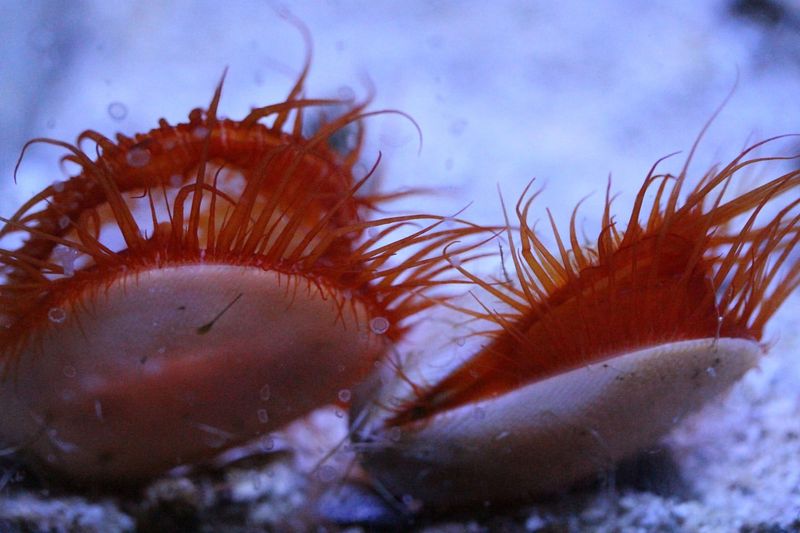
These fascinating bivalves with a multitude of tiny blue eyes lining the edge of their shells. These eyes, numbering up to 100, are not just for show. They enable scallops to detect changes in light and motion, essential for survival.
These eyes are surprisingly complex, featuring mirrors that focus light onto their retinas, a rarity among mollusks. This unique vision mechanism helps them sense predators and escape by jetting away.
Their ability to perceive approaching threats allows scallops to react swiftly, closing their shells to protect themselves, a critical adaptation in their often dangerous habitats.
6. Mantis Shrimp
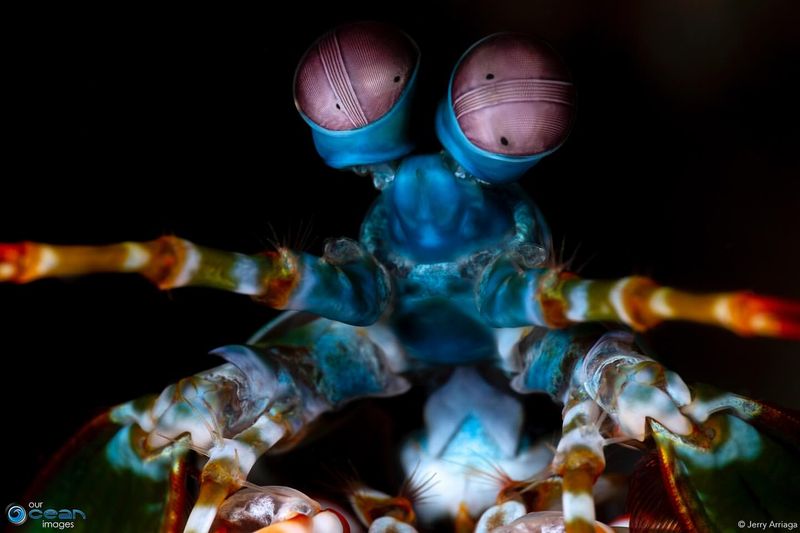
Possessing up to sixteen types of photoreceptors in their eyes, Mantis shrimp are renowned for their extraordinary eyesight. This capability far surpasses human vision, enabling them to see ultraviolet and polarized light.
Their eyes operate independently, allowing them to gauge depth and distance with precision. This is especially useful for their hunting strategy, as they are known for their swift, powerful strikes.
This remarkable vision is complemented by their vibrant coloration and aggressive nature, making them one of the most captivating predators in the marine world.
7. Dragonflies
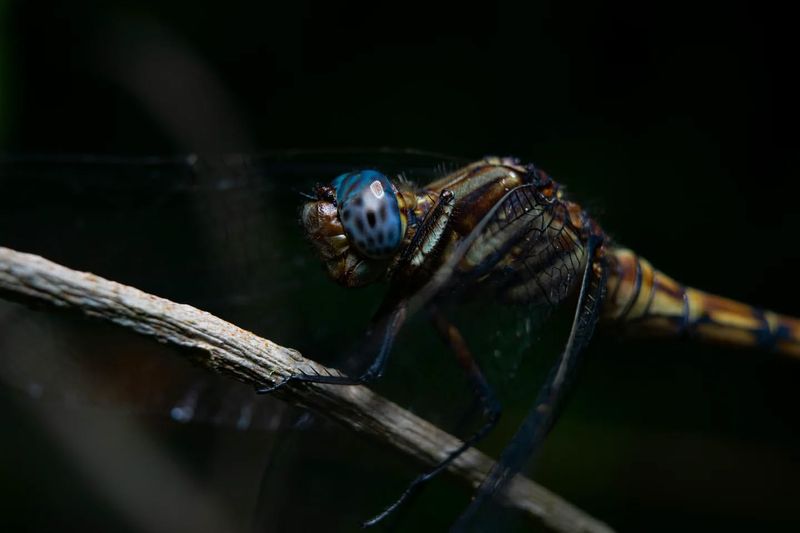
Dragonflies possess some of the most advanced visual systems in the insect world. Their large compound eyes cover most of their head, granting them nearly 360-degree vision. This visual prowess is crucial for hunting and avoiding predators.
Each eye comprises thousands of tiny lenses, providing a mosaic of images that help them detect movement with incredible accuracy. This aids them in capturing prey mid-flight.
Their extraordinary eyesight, combined with agile flight, makes dragonflies formidable aerial hunters, able to track and capture insects with unmatched precision.
8. Cuttlefish
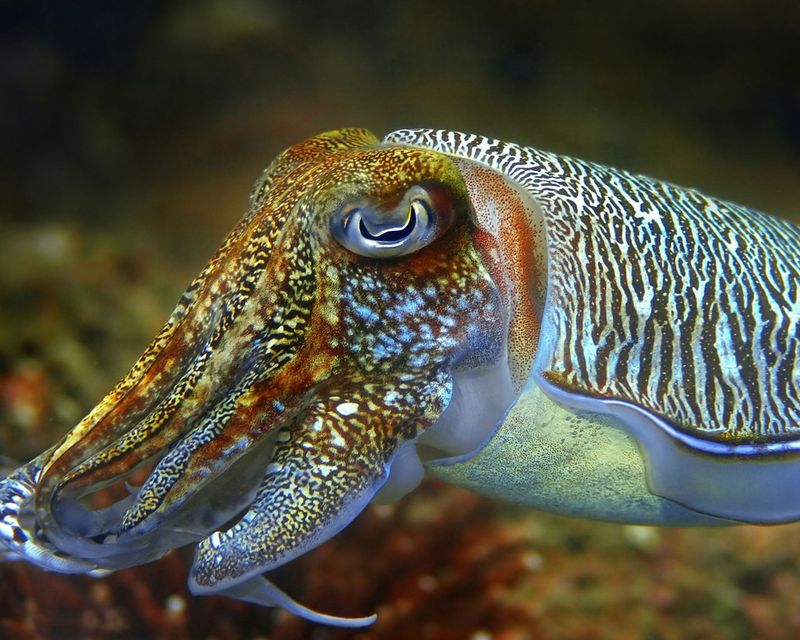
These masters of disguise have a unique vision. Their eyes are equipped with W-shaped pupils, allowing them to perceive changes in light and contrast effectively. This adaptation helps them blend into their surroundings.
Beyond camouflage, their vision aids in communication through body patterns, a crucial aspect of their social behavior. They can also see polarized light, giving them an edge in detecting prey and predators.
Cuttlefish are not only visually adept but also highly intelligent, using their keen eyesight in tandem with their dynamic skin coloration to survive in diverse marine environments.
9. Flatworms
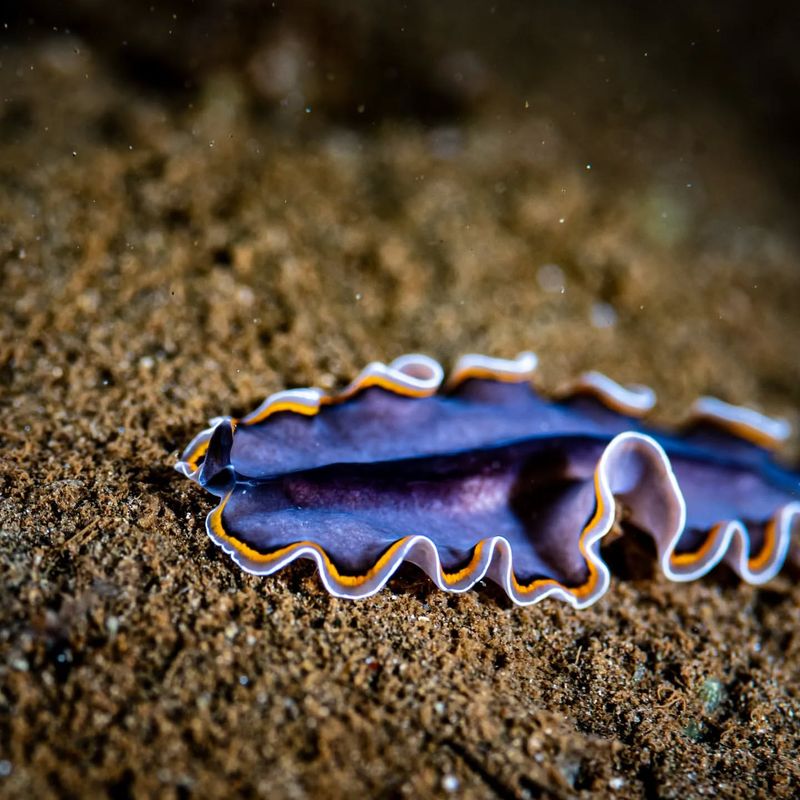
Flatworms are simple yet fascinating creatures, featuring rudimentary eyes known as eye spots. These eyespots are sensitive to light intensity and aid in navigation across their habitats.
Although their vision lacks detail, it’s sufficient for detecting shadows and general changes in light, helping them avoid predators. Their flat bodies allow them to glide smoothly across surfaces in their aquatic environments.
The simplicity of their eyes reflects their overall body plan, but these creatures are important in ecosystems, often serving as indicators of environmental health.
10. Butterflies
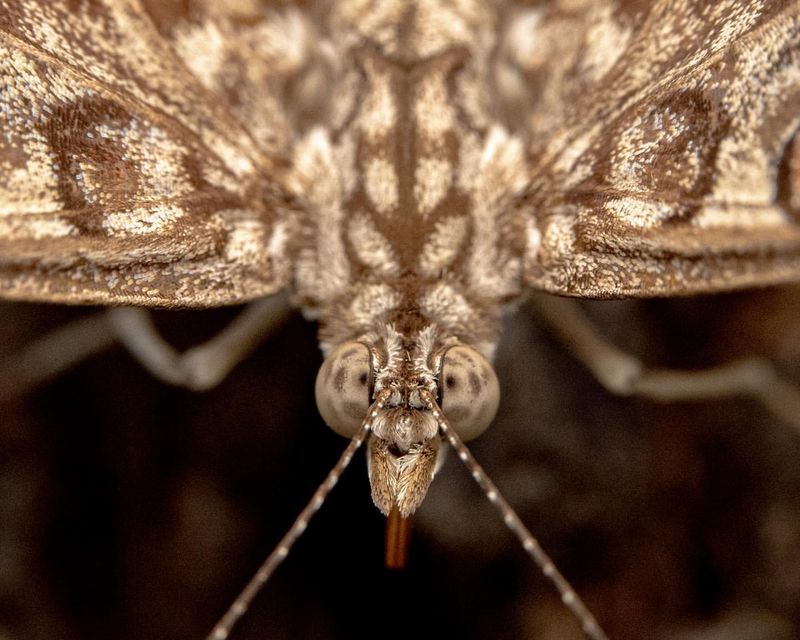
Butterflies are known for their brilliant coloration and delicate wings, but their eyesight is equally remarkable. Their compound eyes are large and complex, enabling them to detect a wide range of colors, including ultraviolet light.
This visual capability is crucial for locating nectar-rich flowers and identifying mates. Their eyes provide a broad field of vision, allowing them to quickly detect motion, essential for evading predators.
The intricate patterns and colors on their wings are often used in displays during courtship, a behavior intricately linked with their acute visual abilities.
11. Bees
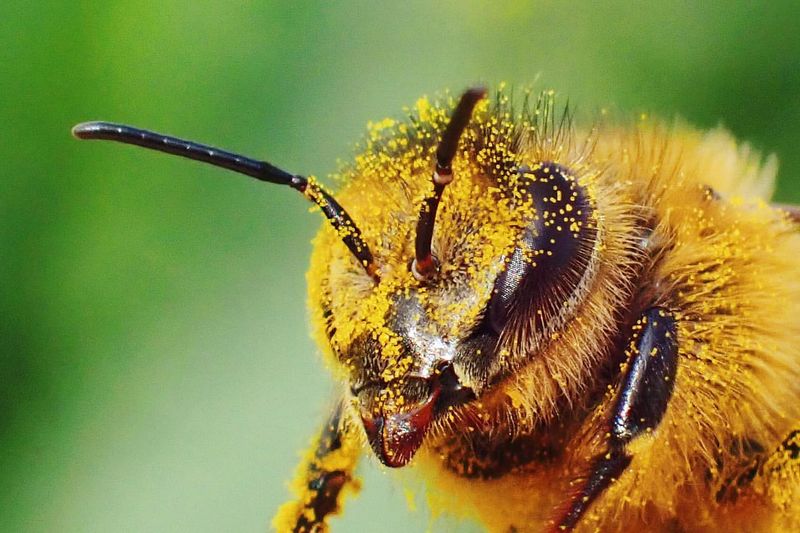
These vital pollinators have highly developed eyes that support their essential ecological role. Their compound eyes are adept at detecting ultraviolet patterns on flowers, guiding them to nectar sources.
These eyes are also sensitive to polarized light, helping bees navigate and communicate with their hive mates. Their ability to perceive different light spectrums is crucial for foraging activities.
Beyond their role in pollination, bees’ visual acuity aids in recognizing threats and navigating complex environments, ensuring the survival of their colonies.
12. Whip Spiders
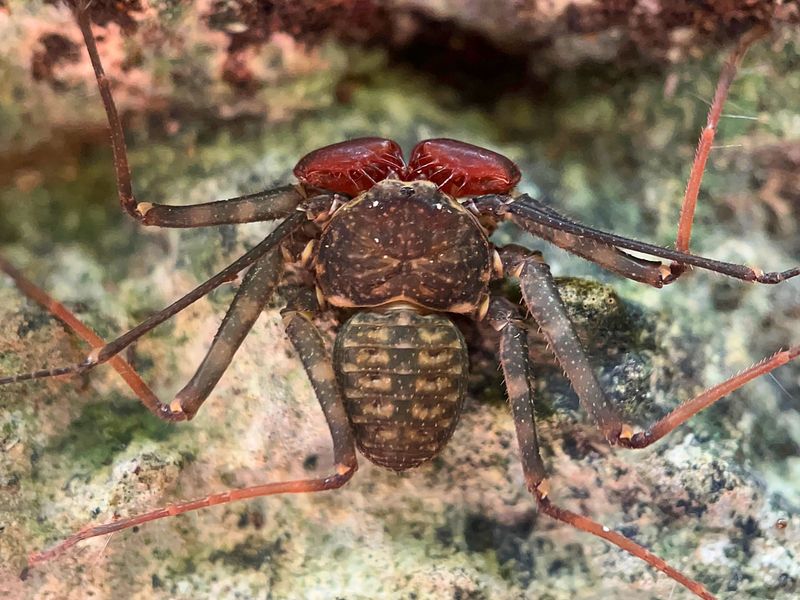
Whip spiders, also known as tailless whip scorpions, are intriguing arachnids with multiple eyes. They typically have eight eyes, although their vision is not as sharp as other arachnids.
These nocturnal hunters rely more on their long, whip-like legs to sense their environment. Their eyes help them detect movement and navigate the dark caves and crevices they inhabit.
Despite their intimidating appearance, whip spiders are harmless to humans and play a vital role in controlling insect populations.
13. Tuatara
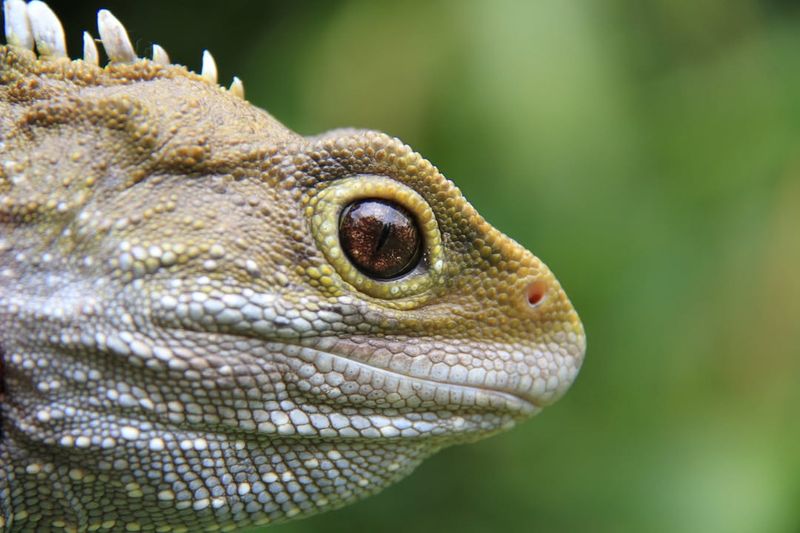
This unique reptile native to New Zealand is distinguished by its third eye. This ‘parietal eye’ sits on top of its head, although it is not used for vision in the traditional sense.
This eye helps regulate circadian rhythms and hormone production. The other two eyes provide the tuatara with standard vision capabilities.
This ancient creature offers a glimpse into the evolutionary past, as it has remained largely unchanged for millions of years. Its unique characteristics make it a living fossil, cherished in its native ecosystem.
14. Shrimp
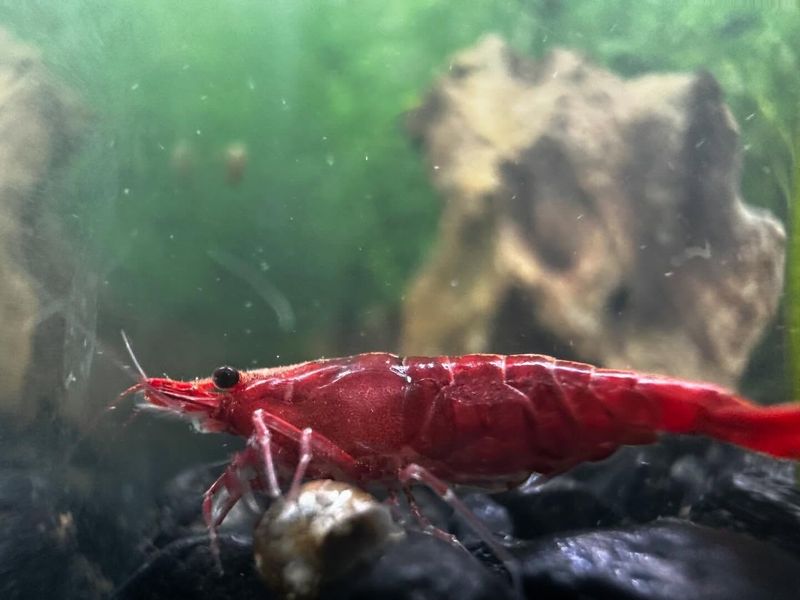
Shrimp are small crustaceans with an impressive visual system. Their compound eyes are mounted on stalks, allowing for a wide range of motion and a panoramic view of their surroundings.
This setup is crucial for detecting predators and navigating their complex coral reef habitats. Their ability to see polarized light adds another layer to their visual capabilities.
These agile creatures rely heavily on their acute vision for feeding and avoiding capture, playing an integral role in the marine food web.
15. Lobsters
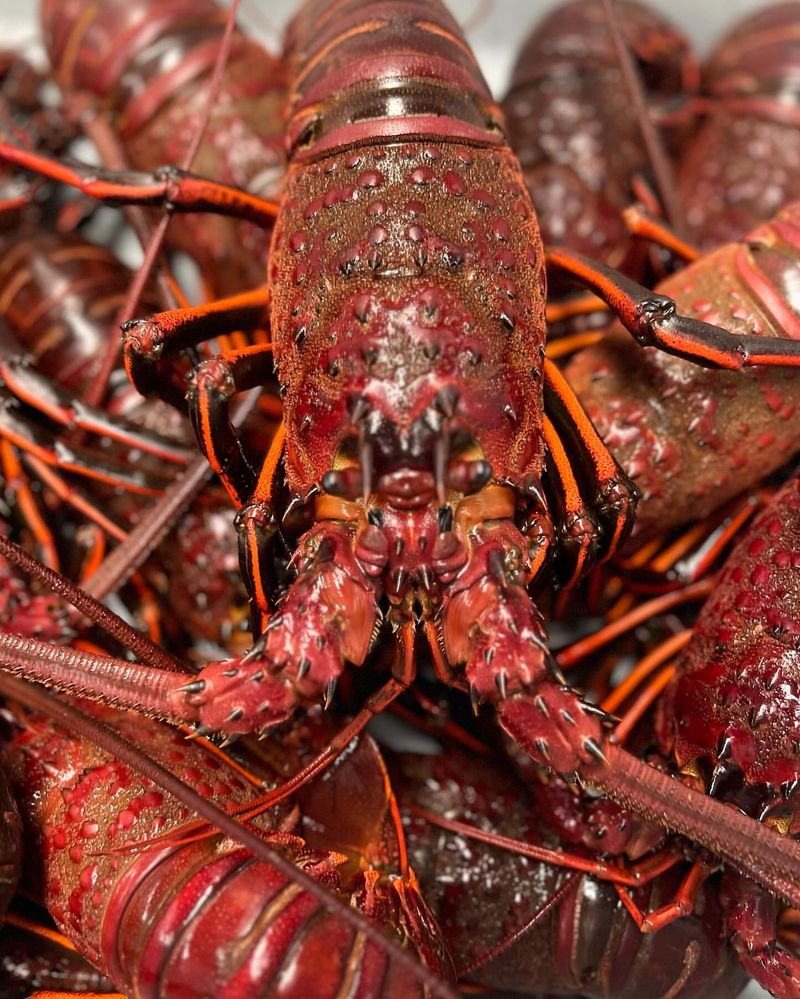
Lobsters are well-adapted marine creatures with sophisticated eyes that are mounted on stalks. These compound eyes provide them with a broad field of vision, essential for survival in the ocean depths.
This adaptation allows them to detect movement and light changes, crucial for evading predators and locating food. Lobsters’ eyes are specially adapted to see in low light, a necessity in their deep-sea habitats.
These crustaceans are not only known for their culinary value but also for their complex behaviors and ecological importance.
16. Crabs
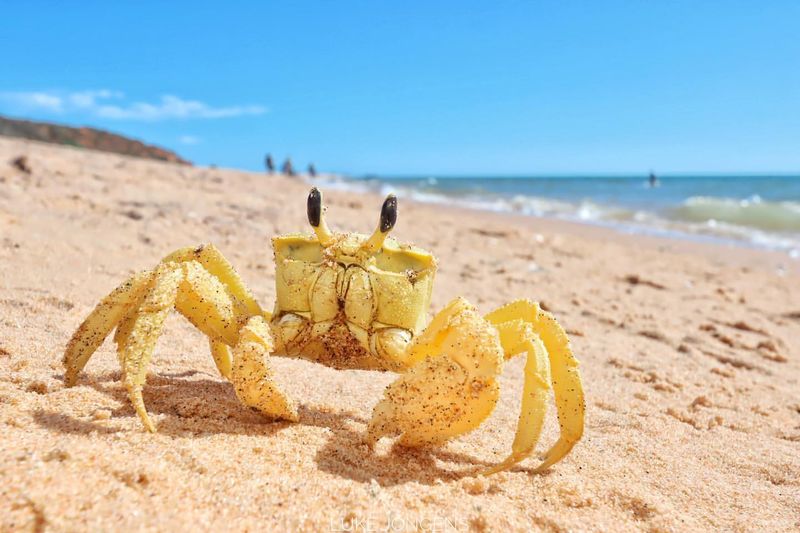
These versatile crustaceans are equipped with eyes on long stalks. This unique adaptation allows them to scan their environment while keeping most of their body hidden under sand or rocks.
Their compound eyes are excellent at detecting movement and light changes, crucial for avoiding predators and finding food. This visual acuity supports their foraging and defensive behaviors.
Crabs are integral to coastal ecosystems, known for their scavenging habits and ability to adapt to various habitats, from beaches to tidal pools.
17. Scorpions
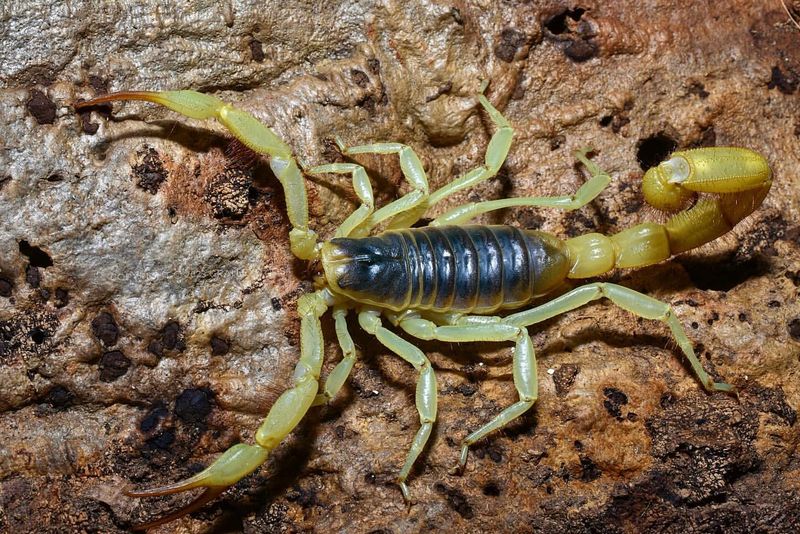
Scorpions are formidable arachnids with a distinctive set of multiple eyes. Typically, they have two primary eyes and several smaller lateral eyes, giving them a wide field of view.
These night hunters use their eyes to detect movement and navigate their arid habitats. Their ability to fluoresce under UV light is a unique feature, although its exact purpose remains a mystery.
Scorpions’ robust visual capabilities, combined with their potent sting, make them effective predators in their harsh environments.
18. Octopuses
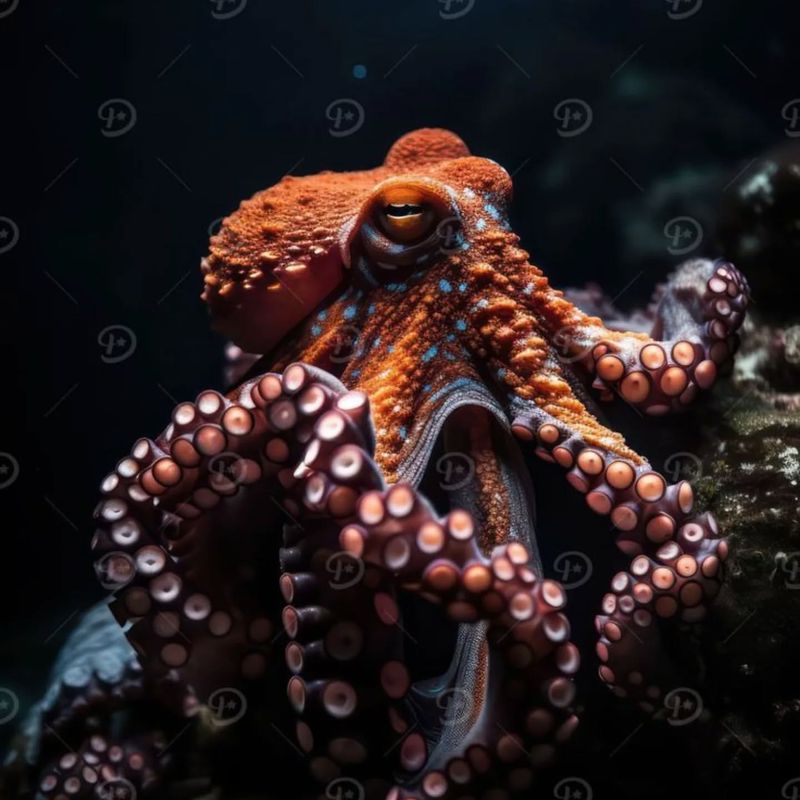
Octopuses are renowned for their intelligence and striking eyes. Their large, well-developed eyes grant them excellent vision, even in dim underwater environments.
These cephalopods possess a sophisticated camera-like eye structure, aiding in navigation and hunting. Their ability to change skin color and texture is closely tied to their visual perception.
Octopuses use their vision to interact with their environment in complex ways, from communicating with other octopuses to solving intricate problems.

